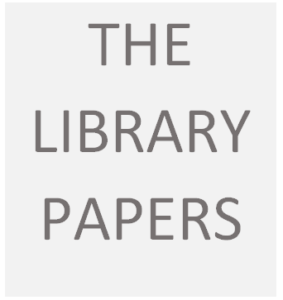3.7 Multi-Media Tools
Journal Entry 7
To me, the most positive effect of digital media on literacy instruction is the emphasis on production, or student response. As Dalton and Grisham (2013) demonstrate, there are many different tools and formats available for creating content, which has made it possible for students to exercise autonomy and creativity in terms of how they respond, and to produce more authentic, situated responses.
But this new freedom to respond raises the issue of how to assess, and what to assess, in multi-media responses. It’s not fair to assess students for criteria they were never told would be included, and even more, which they were never taught. In order for teachers to helpfully assess student work, and to support students as they produce that work in the first place, some basic criteria need to be in place. What this means for teachers is that in addition to ensuring students understand the curriculum, they also need to help them use authoring tools effectively (Leu, 2014).
Giving students instruction in designing for different media should not be seen as a distraction from teaching the curriculum. As the section on storyboarding in the notes for this module show, planning a project by closely analyzing the material to be presented, and deciding how best to present it is actually an integral part of the teaching/learning process. But at the same time, keeping up with the field of digital authoring tools, or even acquiring basic expertise, can be overwhelming, and I think this is where a teacher librarian can be useful.
Below are some resources I think would be helpful for teachers to be aware of. These resources could also be used by students themselves, sometimes exactly as they are here, but sometimes, for younger students, with a bit of adaptation. I have selected them because they address basic design principles in a variety of media. These are only a few examples, and don’t apply only to digital media, but to hard copy posters, collages, brochures etc:
Works Cited (Click Here)
Works Cited
Bang, Molly. Picture This: How Pictures Work. San Francisco, Chronicle Books, 2016.
Dalton, Bridget, and Dana L. Grisham. “Love That Book.” The Reading Teacher, vol. 67, no. 3, 2013, pp. 220–225., doi:10.1002/trtr.1206.
Duarte, 11.07.2013 / Nancy. “FREE Multimedia Version of Resonate.” Duarte, 11 July 2013, www.duarte.com/blog/free-multimedia-version-of-resonate/. Accessed 17 Mar. 2017.
Duarte, Nancy. Resonate: Present Visual Stories That Transform Audiences. Hoboken, NJ, Wiley, 2010.
Krug, Steve. Don’t Make Me Think, Revisited: a Common Sense Approach to Web Usability. Berkeley, CA, New Riders Pub., 2014.
McCloud, Scott, and Mark Martin. Understanding Comics: the Invisible Art. New York, NY, William Morrow, an Imprint of HarperCollinsPublishers, 2014.
Rodgers, Carol R. “Attending to Student Voice: The Impact of Descriptive Feedback on Learning and Teaching.” Curriculum Inquiry, vol. 36, no. 2, 2006, pp. 209–237., doi:10.1111/j.1467-873x.2006.00353.x.
Williams, Robin. The Non-Designer’s Design Book: Design and Typographic Principles for the Visual Novice. 4th ed., San Francisco, CA, Peachpit Press, 2015.



